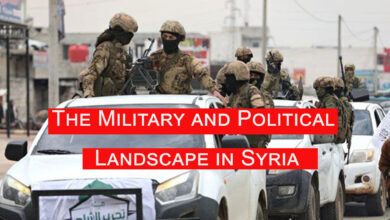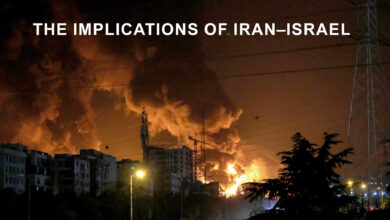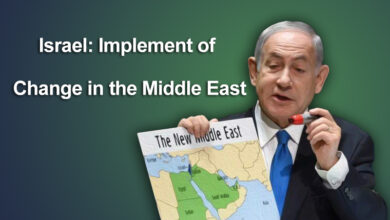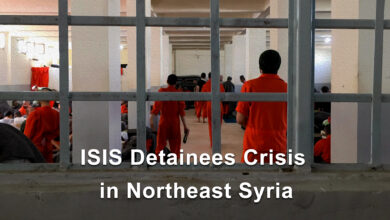Signs of new policies in the context of the Syrian crisis

The Baathist regime continues its relentless attempts to float itself and legitimize its presence in power, continuing its policies that it has pursued since the beginning of the Syrian crisis to ensure that what has remained of its popular base did not get away from its control, and attempting to annihilate any attempts aimed at highlighting anti-Baathist currents in the capital, Damascus, and violating the center of the decision, which is controlled by Russia and Iran.
Perhaps the most prominent points that can be reviewed are the visit of the UAE Foreign Minister Abdullah bin Zayed Al Nahyan to the capital, Damascus, and his meeting with the head of the Baathist regime, Bashar al-Assad, which drew a kind of disapproval from the West and the Arab countries, which had prompted some countries to show their dissatisfaction. From the direct normalization shown by the Emirates, although the Emirates did not show any intention of its desire to return Damascus to the Arab League again, this visit included touches of the Baathist regime in an attempt to send messages of reassurance to the Syrian interior that Emirati investments return to Damascus. Indeed, some media outlets close to it reported that the Ministry of Electricity of the regime’s government contracted with a grouping of Emirati companies to build a photovoltaic power plant with a capacity of 300 megawatts in the countryside of Damascus, to be turned out later that the personalities that appeared in the pictures circulated by the media were Syrian personalities and men. Syrians’ actions are in contrast to the narrative that the regime had promoted.
In the same context, and with the aim of demonstrating the return of life somewhat to normal, the Baathist regime, under the umbrella and guidance of Russia, launched an extensive meeting to prepare the atmosphere for the return of Syrian refugees, which is one of the main pillars on which the West relies on reactivating relations and contributing to the reconstruction in Syria and lifting Western sanctions as well. However, Washington had expressed its reservation regarding the re-normalization with the current regime on the condition of the gradual change in the policies of the current Baathist regime, which was confirmed by Washington in its understandings with Russia regarding the Syrian file. These steps come at a time when Russia seeks to reduce Washington’s concerns in Syria. Here, the launch of a tripartite security summit that includes Moscow, Washington and Tel Aviv, similar to the Jerusalem summit in June 2019, cannot be ruled out, according to which the Russian forces provided great facilities for Israeli military and security operations inside Syrian territory.
Despite the intransigence of the Baathist regime in its policies towards areas outside its control and its rejection of all forms of political solution and its continued vision of the crisis in Syria as a security file that must be dealt with by the security services, the Daraa settlement process emerged as the clear security incursion into what the governorate witnessed, as that settlement which was directly supervised by the Russian forces in an attempt to overcome the obstacles that could distract the Russian efforts to create a stable environment in Syria was shocked by turning the events that took place in Daraa into a criminal file, according to which the Baathist regime liquidated all the settlement elements who had made settlements earlier. It also withdrew its weapons so that those members would not show any resistance if their agendas were to be re-implemented in the region.
In the same context, the settlement in Deir ez-Zor governorate, headed by Hussam Louka, the General Director of the Intelligence, came as a clear confirmation that the Baathist regime is still adopting the same method in dealing with the crisis in the region, despite the numbers declared by the regime, which amounted to 1,300 people. It includes men and women, but according to the information obtained, a large number of the popular crowd and Iranian formations were present in the settlement process, which opens the door to questions about the timing and purpose of the settlement process. Here, we do not rule out that these steps by the Baathist regime come in the context of forming pressure cards on the Arab clans and the Arab component in the areas of northeastern Syria at a time when the government of Justice and Development is leading a psychological war towards the areas of northeastern Syria with the aim of pushing the Autonomous Administration and the Syrian Democratic Forces to make more concessions in favor of international powers.
Undoubtedly, it clearly highlights the dispute of interests in the capital, Damascus, between Iran and Russia, which the latter seeks to change the Syrian equation by replacing the language used by the Baathist regime towards regional files, most notably the relationship with neighboring countries, including Tel Aviv. The Iranian movement is satisfied, and it is possible that the dialogue between the Autonomous Administration and the capital, Damascus, has faltered due to the situation of obstacles by the Iranian movement and the remarkable escalation of the threat language, which is being increased day by day, which is being launched by the Baathist regime’s media towards the regions of northern and eastern Syria.
The possible scenarios that the Baathist regime may witness during the coming period, regarding the military escalation against the regime by the United States of America and Tel Aviv, subject to the Russian-US-Israeli understandings that may take place in the coming weeks.
Alan Daoud




